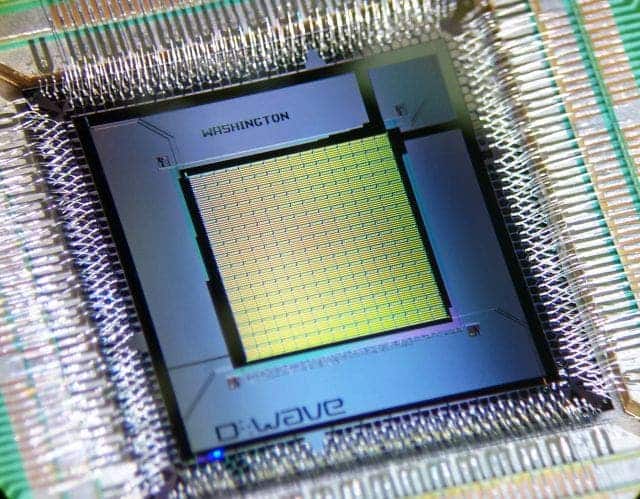Since 2013, Google and NASA have worked together to run code specifically designed for a quantum machine bought from D-Wave. Now, researchers report in a new paper that has yet to be peer-reviewed that the machine can perform quantum computing operations. Their trials show that the machine can run code 100 million times faster than a conventional single-core processor, but only for specific optimization problems. In all other aspects, the machine can’t yet compete with a single-core processor since it’s not a universal quantum computer. The findings, however, signal a breakthrough in the field. It might not be long before quantum computers — along with their much heralded benefits across all fields of science — become an every day reality.

Why you should care about quantum computers
Transistors perform logic operations by shuttling bits of data, each assigned a value which is either “0” or “1”. That’s how a classical, digital computer works. Quantum computers, however, use qubits or a quantum bit which can simultaneously exist in both states at once – both “0” and “1”. This is known as a superposition, and if scientists can leverage it then information could be processed in parallel. Two-qubits can perform operations on four values, three on eight values and so on in powers of two. Today’s computers have millions of transistors. Now imagine a quantum logic gate that works with millions of qubits. The computing force would be unheard of.
A quantum computer, almost
The join team closely worked together at NASA’s Ames Research Center in Mountain View, California. It is here that they put to the test the much controversial D-Wave 2X quantum computer, which the company says has “over 1000 qubits.” A previous version that also sits at the Ames Research Center was heralded as the “world’s first commercial quantum computer” – this is a controversial claim since scientists weren’t able to prove or disprove for that matter that the machine can indeed run quantum operations. For instance, it’s was only recently that researchers demonstrated two-qubit system inside a silicon chip and ran code on it.
Yesterday at an event, Google and NASA announced that the D-Wave computer can actually walk the talk for some highly specialised workloads known as annealing. In a face to face stand-off, the researchers used simulated annealing on a conventional processor, and quantum annealing on the D-Wave machine. For this particular workload, the D-Wave computer was able to solve the problem 100 million times faster.
“We found that for problem instances involving nearly 1000 binary variables, quantum annealing significantly outperforms its classical counterpart, simulated annealing. It is more than 10^8 times faster than simulated annealing running on a single core. We also compared the quantum hardware to another algorithm called Quantum Monte Carlo. This is a method designed to emulate the behavior of quantum systems, but it runs on conventional processors. While the scaling with size between these two methods is comparable, they are again separated by a large factor sometimes as high as 10^8,” Google explained.
The results were discussed in a research paper published online by Google. It’s yet to pass peer-review, however.
Does this mean we’ve finally reached the era of quantum computing? Far from it. The D-Wave machine is capable of performing only a limited set of tasks. In other words, it’s not a universal quantum computer. Companies like Google, Microsoft, IBM and of course D-Wave have their own research labs that are focused solely on making an universal quantum computer. For now, these recent developments hint that we’re not that far off as we might think.



